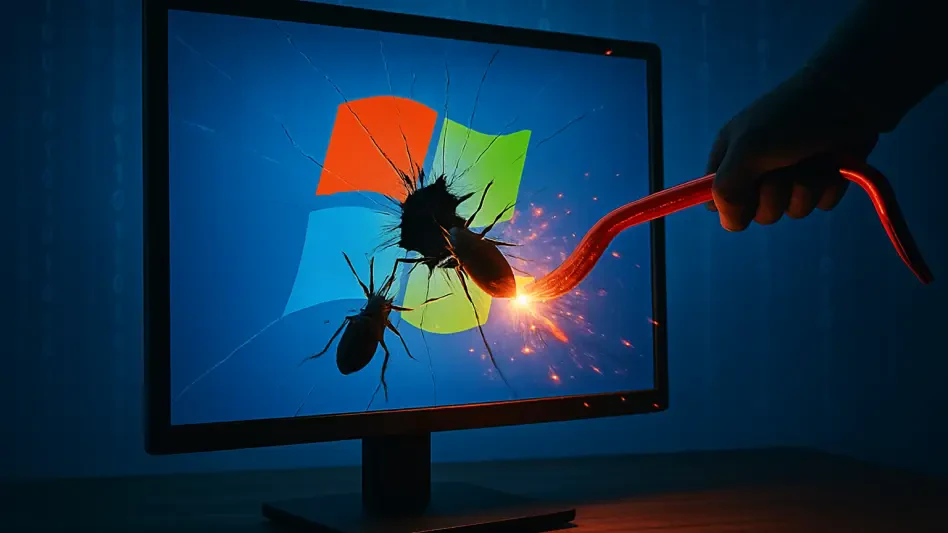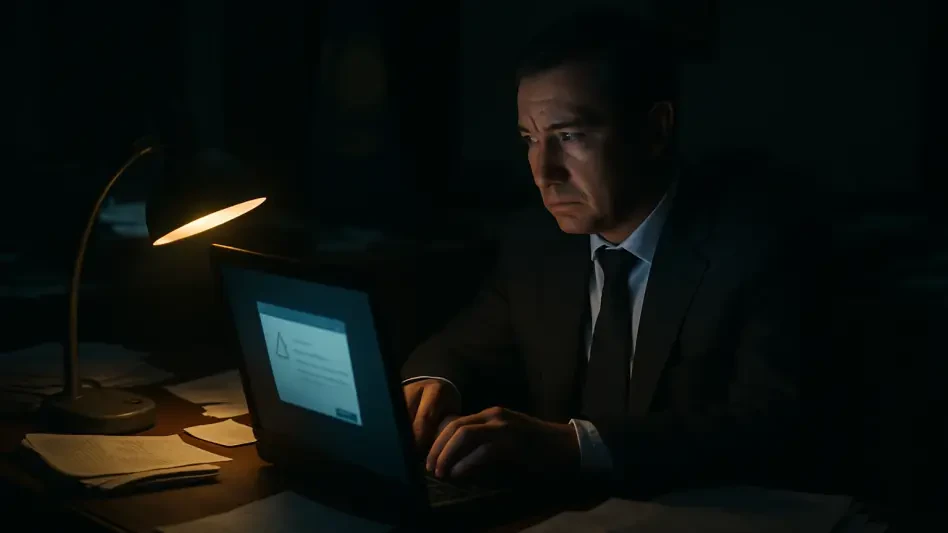In the murky realm of cyber espionage, a formidable Iranian-linked group known as Subtle Snail (UNC1549) has emerged as a critical threat to European technology sectors, particularly telecommunications, aerospace, and defense. With activities traced back several years, this group has demonstrated a chilling proficiency in infiltrating vital infrastructure to extract sensitive data while securing prolonged access to compromised systems. Their operations, tied to broader Iranian cyber networks, reveal a calculated blend of technical mastery and deceptive tactics that exploit both digital and human vulnerabilities. As their campaigns continue to target high-value individuals within these industries, the urgency to understand and counter their methods grows exponentially. This article explores the intricate strategies employed by Subtle Snail, shedding light on their operational prowess and the profound risks they pose to European firms and national security at large.
Operational Tactics of Subtle Snail
Deceptive Recruitment Schemes
Subtle Snail’s ability to gain initial access to targeted systems often hinges on meticulously crafted social engineering tactics that prey on professional trust. A primary method involves posing as human resources representatives on platforms like LinkedIn, where they create convincing profiles and distribute fraudulent job offers. These fake recruitment schemes are designed to lure unsuspecting individuals—often IT administrators, researchers, or developers—into downloading malicious files disguised as legitimate application materials. By exploiting the inherent trust in professional networking environments, the group effectively bypasses initial security barriers. This approach not only highlights their understanding of human behavior but also underscores the vulnerability of even well-protected organizations when employees are deceived by seemingly credible interactions.
Beyond the creation of fake profiles, Subtle Snail enhances the realism of their scams by crafting detailed job postings in PDF format and setting up deceptive application portals on domains mimicking legitimate industry entities. These portals often request personal information or direct targets to download infected files under the guise of completing an application process. The precision with which these campaigns are tailored to specific individuals or roles within an organization amplifies their success rate. Such tactics reveal a deep level of reconnaissance, as the group identifies high-value targets with access to critical systems before launching their attacks. The reliance on spearphishing in this manner illustrates a persistent trend in cyber espionage where human error becomes the weakest link in the security chain.
Use of Legitimate Platforms
One of the more insidious aspects of Subtle Snail’s operations is their exploitation of trusted digital services to mask malicious activities. By leveraging Microsoft Azure for their Command and Control (C2) infrastructure, the group ensures that their traffic blends seamlessly with regular cloud communications. This tactic significantly hampers detection by traditional security tools, as the malicious activities appear indistinguishable from routine business operations. The use of such legitimate platforms not only provides a layer of anonymity but also complicates efforts to trace and block their communications, allowing sustained access to compromised networks over extended periods.
Further compounding the challenge is the strategic choice to proxy their C2 servers through widely used cloud services, which are often whitelisted by corporate security policies. This blending of malicious intent with trusted infrastructure reflects a broader trend among state-sponsored actors to hide in plain sight, exploiting the very systems organizations rely upon for day-to-day operations. The difficulty in distinguishing between legitimate and harmful traffic necessitates advanced monitoring and behavioral analysis tools to identify anomalies. For European tech firms, this underscores the need to scrutinize even trusted services for signs of misuse, as Subtle Snail’s approach exemplifies how adversaries can turn an organization’s strengths into vulnerabilities.
Technical Sophistication and Malware Deployment
Custom Malware Development
At the core of Subtle Snail’s technical arsenal lies their bespoke malware, notably the MINIBIKE backdoor, which is meticulously tailored for each victim to maximize impact and evade detection. This custom variant facilitates a range of espionage activities, from stealing sensitive emails and VPN configurations to extracting confidential files from shared folders. By employing techniques such as DLL sideloading, where malicious code is executed via legitimate signed binaries, the group ensures their activities remain hidden from standard antivirus and behavioral analysis tools. This level of customization not only demonstrates their technical acumen but also their commitment to bypassing conventional security measures with victim-specific adaptations.
The development of unique DLLs for each target and action further enhances Subtle Snail’s ability to operate undetected within compromised environments. Each iteration of the MINIBIKE backdoor is designed to perform specific tasks aligned with the espionage goals for that particular victim, whether it’s data exfiltration or reconnaissance for lateral movement. This tailored approach means that even if one variant is detected and neutralized, others may remain active, posing an ongoing threat. The sophistication of these tools signals a high level of resource investment, likely indicative of state-sponsored backing, and presents a formidable challenge for cybersecurity teams tasked with identifying and mitigating such dynamic threats across diverse systems.
Persistence and Stealth Mechanisms
Ensuring long-term access to infiltrated networks is a hallmark of Subtle Snail’s operational strategy, achieved through sophisticated persistence mechanisms embedded in their malware. By configuring the MINIBIKE backdoor to reload during system startups, the group guarantees continued control across reboots and user sessions, maintaining a foothold in compromised environments. This focus on persistence over immediate exploitation reflects a patient approach to espionage, prioritizing sustained intelligence gathering over short-term gains. Such tactics make it incredibly difficult for organizations to fully eradicate the threat, as remnants of the malware can linger undetected for extended periods.
Adding to their stealth capabilities, Subtle Snail employs real-time command execution through Windows CMD, enabling dynamic reconnaissance and lateral movement within a network. This flexibility allows the group to adapt their tactics based on the specific environment of each compromised system, deploying additional tools or adjusting their approach as needed. The ability to execute commands in real time further aids in mapping internal structures and identifying additional points of access, all while remaining under the radar of traditional security monitoring. For targeted industries, this underscores the importance of continuous monitoring and rapid response protocols to detect and disrupt such persistent threats before they can fully entrench themselves.
Targeted Industries and Strategic Goals
Focus on Critical Sectors
Subtle Snail’s primary focus on telecommunications firms reveals a strategic intent to exploit sectors integral to national infrastructure and communication networks across Europe. These organizations, with their access to vast amounts of data and connectivity, serve as gateways to broader economic and security interests, making them prime targets for espionage. By infiltrating these firms, the group can potentially harvest critical information, disrupt services, or gain insights into national communication frameworks. Their secondary interest in aerospace and defense sectors further indicates a broader agenda aimed at acquiring proprietary technologies and classified data, which could have far-reaching implications for national security.
The deliberate selection of these industries is not arbitrary but aligns with objectives often associated with state-sponsored cyber actors seeking strategic advantages. Aerospace and defense firms, in particular, hold sensitive information related to military capabilities and cutting-edge innovations, making them attractive targets for adversaries looking to bolster their own technological or tactical prowess. The convergence of these sectors under Subtle Snail’s crosshairs amplifies the stakes, as the loss of such data could undermine competitive edges and compromise defense readiness. This targeted approach necessitates specialized defenses tailored to the unique risks faced by these critical industries.
Broader Implications
The ramifications of Subtle Snail’s campaigns extend far beyond the immediate loss of data, posing significant risks to both economic stability and national security in Europe. The theft of customer databases, network configurations, and proprietary technologies can provide adversarial states with strategic leverage, whether through economic espionage or potential blackmail. Such breaches can erode trust in critical infrastructure providers, disrupt supply chains, and even influence geopolitical dynamics if sensitive information falls into the wrong hands. The scale of these potential impacts highlights the urgency for affected sectors to fortify their cybersecurity postures against such sophisticated threats.
Moreover, the broader trend of state-sponsored actors targeting critical sectors reflects an evolving cyber battlefield where economic and security interests are increasingly intertwined. Subtle Snail’s success in compromising multiple organizations in a short timeframe serves as a wake-up call for European tech firms to reassess their vulnerability to espionage-driven campaigns. Addressing these risks requires not only technical solutions but also international cooperation to share threat intelligence and develop unified strategies against common adversaries. As the group’s activities continue to expose systemic weaknesses, the need for proactive measures and robust policy frameworks becomes ever more pressing to safeguard vital industries.
Defensive Challenges and Future Outlook
Evolving Threat Landscape
The sophisticated blend of technical and psychological tactics employed by Subtle Snail underscores the evolving nature of cyber threats facing European tech firms today. Their ability to merge advanced malware deployment with social engineering on trusted platforms like LinkedIn reveals a dual-pronged approach that exploits both digital infrastructure and human trust. This complexity challenges conventional cybersecurity models, which often focus on technological defenses while overlooking the human element. As state-sponsored actors refine these hybrid strategies, organizations must adapt by integrating behavioral training and advanced threat detection to counter both vectors of attack effectively.
Additionally, the rapid pace at which Subtle Snail adapts to specific targets and environments signals a shift toward more dynamic and personalized cyber espionage. Traditional static defenses, such as signature-based antivirus software, are increasingly inadequate against custom tools like the MINIBIKE backdoor. The need for real-time analytics and machine learning-driven solutions to identify anomalies in network behavior has never been greater. For industries under siege, staying ahead of such adaptive threats requires a forward-thinking approach that anticipates future tactics and invests in cutting-edge technologies to bolster resilience against persistent adversaries.
Strengthening Industry Defenses
Looking back, the rapid infiltration of multiple organizations by Subtle Snail exposed critical gaps in cybersecurity preparedness that demanded immediate attention. The successful compromise of numerous devices in a short span highlighted the necessity for enhanced detection mechanisms, particularly for recruitment-themed social engineering attacks that exploit professional platforms. Implementing stricter verification processes for job offers and increasing employee awareness of phishing tactics proved essential in mitigating such risks. These measures helped reduce the likelihood of initial access being granted through deceptive means, addressing one of the group’s primary entry points.
Reflecting on past responses, the urgency to scrutinize cloud-hosted infrastructure for signs of misuse became evident as a key defensive strategy. Given Subtle Snail’s reliance on legitimate services like Microsoft Azure to mask their activities, organizations needed to adopt advanced monitoring tools capable of distinguishing malicious traffic from routine operations. Moving forward, the focus should shift toward developing robust access controls for sensitive systems and fostering international collaboration to share threat intelligence. By building on these lessons, European tech firms can better prepare for future espionage campaigns, ensuring that critical infrastructure remains safeguarded against sophisticated actors intent on long-term infiltration.








